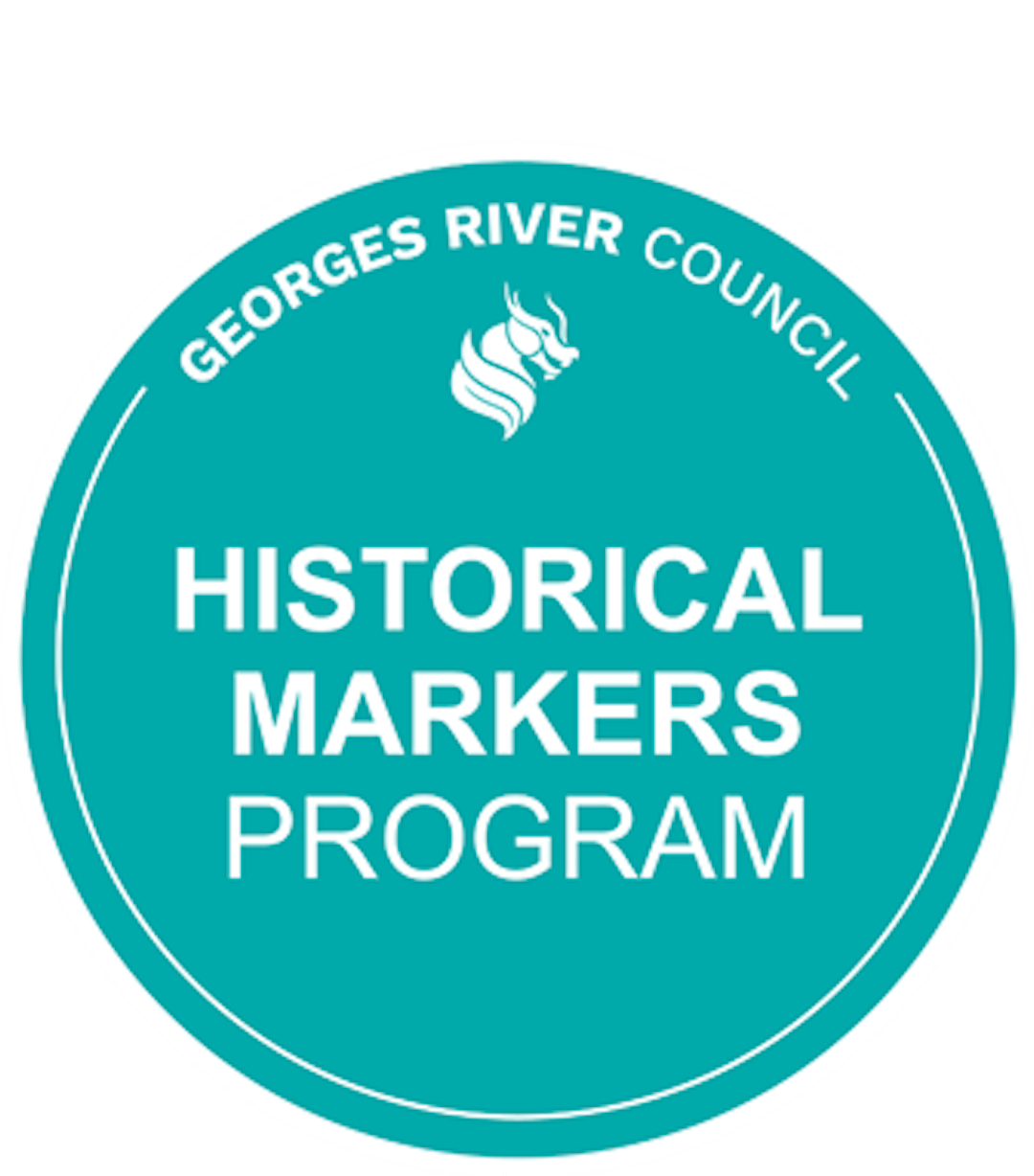Historical Markers Program 2021
Consultation has concluded

Consultation Period: 23 July to 12 August 2021
Linking People of the Past with Sites of the Present
The Georges River Local Government Area (LGA) is an important commercial, transport, environmental, medical and educational district with numerous sites of natural and cultural history and heritage and local historical significance.
A historical markers program, as guided by Georges River Council and the local community, looks to:
- Create awareness of the history, heritage and cultural identity of the Georges River LGA to build a strong sense of identity and belonging in the community,
- Mark historically important places in the local area; and
- Incorporate a historical resource and open air archive which provides multi-dimensional and ongoing opportunities for community engagement with the local area.
Selection of sites for the 2021 Georges River Council Historical Markers Program
Georges River Council’s Historical Markers Program was launched in 2018 to highlight and recognise people and places of historical and cultural importance, as recommended by the local community.
Applications for the 2021 program have been reviewed by a the evaluation panel. The panel identified four new markers for installation and four existing markers for conservation across the LGA. Council would like to hear your thoughts on these sites.
Lugarno Market Gardens (HV Evatt Park, 1116 Forest Rd Lugarno)
The place now known as H.V. Evatt Park was initially developed to produce food by the Webb family, who established a citrus orchard and built a dam on the site during the 1920s. Lee Wun, who had arrived in Australia to work as a market gardener in Botany, took over the lease in the 1950s. Along with family members, Lee turned it into a Chinese market garden, producing carrots, pumpkins, and tomatoes.
This was one of the last operating market gardens in the Georges River area. As early as 1951 a section of Webbs Gardens was reserved for recreational purposes, under the County of Cumberland Planning Scheme. In 1965 the area was made public land. The combined efforts of the Lugarno Progress Association and Hurstville Council resulted in a park of around 25 acres being established.
The recommended location of the marker is near the entrance of the reserve off Forest Road
John O’Grady
Author John O’Grady (1907-1981) used the pseudonym Nino Culotta and wrote the famous book “They’re a Weird Mob”. He lived in Algernon Street Oatley from 1958 till his death in 1981. He was asked why he lived in Oatley and his reply was that it was “the best place to live”. He was described by locals as “an elderly delinquent” as he used to wander the local streets in sandals or thongs and wore flamboyant shirts. His book “They’re a Weird Mob” was not his only publication but was his most successful.
The recommended location of the marker is in the Oatley Memorial Gardens.
Ruby Payne-Scott
Ruby Payne-Scott (1912-1981) was a scientist and pioneer in radio physics and radio astronomy. She is believed to be the first female radio astronomer. She taught at Danebank School in Hurstville from 1963-1974. She died at Oatley in 1981. Her key role in science and the development of equal rights for women is well recognised by the CSIRO, the National Archives and internationally.
The recommended location of the marker is recessed in the footpath beside Park Road, Hurstville in the vicinity of Danebank School.
Carss Park FC
Soccer has a long association with the vicinity of Parkside Drive Reserve in Kogarah Bay. The Carss Park Football Club (previously known as the Carss Park Soccer Club) has been associated with the area since 1953. The club has a proud history in football and a long association with supporting community recreation in the area, including the recent establishment of a special needs program in 2014.
The recommended location of the marker is recessed in a footpath in the vicinity of the playing fields on Parkside Drive Reserve, Kogarah Bay.
Conservation work: Mortdale Fire Station marker
This existing marker recounts the history of the building and the volunteer fire brigade in the early 1900s. The text on the marker is worn and hard to read. It is located at 38 Morts Road, Mortdale and is attached to the fire station building.
Conservation work: Site of Ithiel marker
This existing marker is for the home of Daniel James a prominent tailor in the late 1800s. The text is extensively faded, discoloured and hard to read. The marker is located at 55 Inverness Avenue, Penshurst and is attached to a freestanding concrete plinth next to the footpath outside the property.
Conservation work: Rostrov marker
This existing marker relates to the nearby property that was built for former Mayor John Sproul in the late 1800s. The text is extensively faded and hard to read. The marker is located at the corner of Penshurst Street and Forest Road, Penshurst. It is attached to a freestanding concrete plinth outside the gates to the property.
Conservation work: Penshurst Presbyterian Church marker.
This existing marker relates to the establishment of the church at this site more than 100 years ago. The text is faded and hard to read. It is located at 118 Penshurst Street, Penshurst and is attached to a freestanding concrete plinth outside the property.

